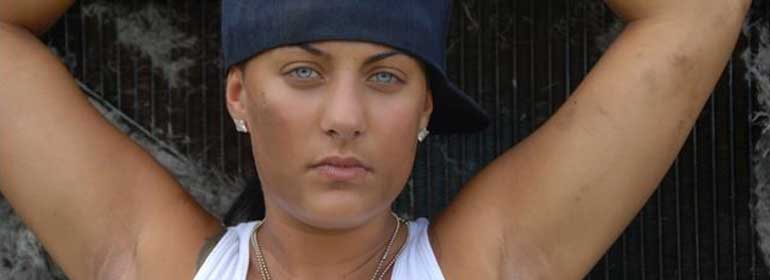When Christine Allen’s date arrived carrying a handbag, she was taken aback. But then Christine started confronting her own prejudices about what the way lesbians should, and shouldn’t, dress.
“Oh, you have a handbag.”
My date has arrived with a glossy Brown Thomas number over her shoulder. At my sudden outburst, her confusion is evident. Then she looks apologetic.
“Sorry,” she says.
“It’s just… well, most gay girls prefer side bags,” I tell her.
It’s no surprise later on, that my request for a follow-up date is rejected.
While I’m not proud of my handbag comment, I didn’t pick up my notions regarding the preferred choice of accessories for lesbians from the ether. Topman shirts, H&M hoodies, Vans footwear, Beanie’s, leather jackets, piercings, tattoo’s, cropped hair – these style preferences are associated with the majority of the twentysomething lesbians that frequent the Dublin scene. For many, these clothes are a clear expression of lesbian identity.
However, what those of us who regularly go around in checked shirts fail to realise is this: Lesbians in dresses do exist. And by pointing out their different fashion sensibilities, we are actually questioning the validity of feminine attire for lesbians.
Not Very Lesbionic
In 2008, I wrote an article on the subject of stereotypes for the GCN youth edition. In this piece I recounted an observation made to me at an LGBT youth group that I wasn’t very ‘lesbionic’ (the reasoning given behind this statement was that I had shoulder-length hair and wore eye make-up). The person was effectively insinuating that I didn’t sartorially measure up to an identity that I had recently just come to terms with.
At 19 years of age, this served only to isolate and further confuse me. Considering my own negative experience, in which I was criticised for looking too ‘femme’, shouldn’t I have known better than to comment on my date’s handbag? Then again, was my reaction all that surprising? After all, from the moment I first met another lesbian, it was suggested that a trace of Elizabeth Arden was just cause for placing a so-called gay woman’s sexual orientation under review.
In preparation for writing this piece, I placed a call-out on social media to speak to lesbians who identified as ‘femme‘. I was interested in learning how prevalent the practice of stereotyping was within the LGBT community today, in order to compare it to the findings of my GCN column in 2008. As I communicated with those who responded, it became clear that little has changed for the better.
The women who got in touch with me spoke about the ‘pressure’ placed upon them by other lesbians to ‘butch up’ their appearances. One said she had “lost her love of dressing girlie”, associating it now with interrogation regarding the authenticity of her sexual orientation.
Another expressed her frustration at how sexuality is judged “solely on appearance”, stating that there are “other aspects” to being a gay woman besides “Converse and Orange Is The New Black hoodies.”
As I read messages from these women, I began to feel angry. My anger was not only at the straight men who they say harass them on nights out, or the lesbians who express incredulity at the fact that they might be gay. No, I was more annoyed at myself.
What A Bit of Make-up Can Do
A close friend of mine recently uploaded pictures from a family member’s wedding to Facebook. In one photo she wore a red dress with crimson lipstick to match. Jokingly, perhaps feeling self – conscious about her new look, she attached another photo of herself, donned in her usual casual attire, along with the tagline: “Amazing what a bit of make-up can do”. I commented, expressing my preference for her “butch look”.
However, having heard three ‘femme’ women speak about the pressure on them to dress a certain way, I find myself reflecting on this comment. What if my friend’s post was her way of testing the waters with a more feminine image? Would my remark influence her decision on whether or not to pursue the change?
What is it about lesbians in heels that we find so threatening? Does our discomfort stem from a fear that they are undermining an identity that we have cultivated over many decades? Could it be due to anger – anger that femme lesbians are letting the side down by brazenly going around in clothes associated with straight women? Or could it be something deeper? Do these women cause us to question whether our style of clothing is our own, or one we also have felt pressurised into adopting?
When I first came out in 2009 I befriended a group of lesbians who were regulars on the gay scene. Dressed in either a blouse or t-shirt on those initial nights out I felt out of place, surrounded by these women and their checked shirts. One month later, my wardrobe was lined with the latest Topman range. To this day, my preferred choice of outfit for a night out features a shirt. Would this be the case if I hadn’t met those women way back when? After all, I wouldn’t be the first lesbian who upon coming out changed her appearance to fit more in line with her peers.
Whatever the reason for our discomfort with ‘femme’ gay women, those of us who favor flat shoes and L-Word t-shirts need to remember that there is no lesbian code of dress that must be adhered to. Nobody has the right to question the validity of someone’s sexual orientation based on their appearance.
© 2014 GCN (Gay Community News). All rights reserved.
